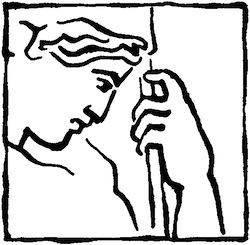Stel een vraag
Met het formulier hier onder kunt u contact op nemen met boekwinkel Scrinium.
MASSING, J.M., - Erasmian Wit and Proverbial Wisdom. An Illustrated Moral Compendium for François I. Facsimile of a Dismembered Manuscript with Introduction and Description.
De vraag gaat over de volgende titel:
| Schrijver: | MASSING, J.M., |
|---|---|
| Titel: | Erasmian Wit and Proverbial Wisdom. An Illustrated Moral Compendium for François I. Facsimile of a Dismembered Manuscript with Introduction and Description. |
| ISBN: | 9780854810963 |
| Uitgever: | Warburg Institute, University of London, 1995 |
| Bijzonderheid: | XI,212,XXXp. Original off white cloth. |
| Prijs: |
€ 45,00
€ 4,50
|
| Meer info | Erasmus of Rotterdam had his first great success in 1500, when his 'Adages' were published in Venice. the Greek and Roman proverbs which he recorded and explained in this book met the Renaissance taste for ancient ethical precepts which could be used as a guide to living in the modern world. In many later editions the maxims were vastly increased in number and Erasmus's commentaries often lengthened into moral essays. The 'Adages' became one of the most popular Latin books of the sixteenth century. Jean Michel Massing's edition of a unique manuscript provides an important early example of the influence, direct and indirect, exerted by Erasmus. In this vividly illustrated set of pithy texts, word and image enhance each other in a way that prefigures the emblematic form which was to become so influential throughout Europe. As is demonstrated in the Introduction, the manuscript was intended for the character training of the future King François I. Its texts were chosen by the young prince's tutor, François Demoulins, who combined them with pictures some time between 1512 and François's accession to the throne in 1515. Demoulins drew heavily on the 1508 edition of Erasmus's 'Adages', selecting those precepts which were most obviously appicable to court life and its pitfalls. He also included a number of sayings attributed to Pythagoras, who was much admired as a sage in the Renaissance. Desmoulins's Erasmian manuscript appeared briefly on the London book market in 1937. Fritz Saxl, then Director of the Warburg Institute, recognizing its interest and importance, had a photographic record made. These photographs, which form the basis of the present facsimile, are the sole surviving witness to the work originally presented to François I. the manuscript disappeared from view in the 1940s, reappearing as s set of single-sheet drawings with the text pages discarded and the inscriptions erased from the pictures. Massing's study places the manuscript in its historical, literary and artistic context, as well as emphasizing its significance for the development of the moral emblem. (Publisher's information). |
| Boek bekijken | |

De verkoper zal binnen 3 werkdagen contact met u opnemen om de koop verder af te handelen.
